Menu

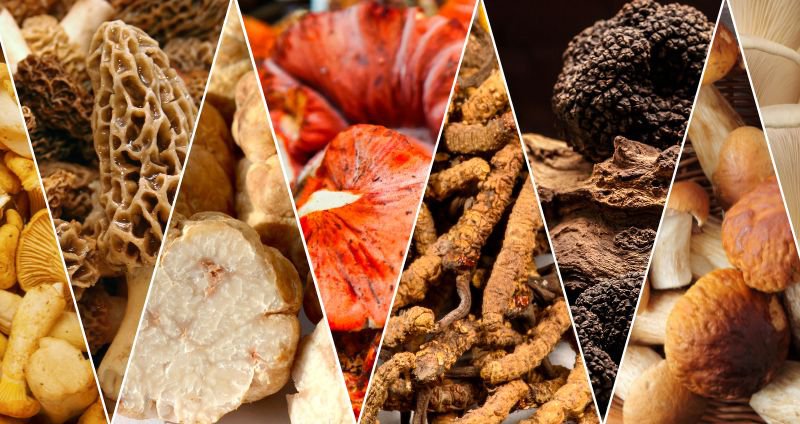

Mushrooms have long been a staple in various cuisines worldwide, but some varieties stand out for their taste and price. This article delves into the world’s most expensive mushrooms, offering mushroom enthusiasts and foodies a detailed look at what makes these fungi so prized.
From their unique qualities and flavor profiles to their origins and harvesting methods, discover why these expensive mushrooms command such high prices and how they are used in gourmet cooking.
Get ready to explore the luxury side of fungi as we note some of the most expensive mushroom varieties in the market. These mushrooms are regarded as culinary treasures for their unique flavor, cultural significance, and potential health benefits.
Also known as "caterpillar fungus," this mushroom is a parasitic fungus that grows on the larvae of ghost moths. It has a slightly sweet and earthy taste but is often used more for its health benefits than its flavor.
One of the most expensive mushrooms in the world costing around $50,000 per pound, Cordyceps sinensis is highly valuable because it has been used as a traditional medicine and tonic in China for hundreds of years. In traditional Chinese medicine, it is used in soups and teas for its purported health benefits.
Its use gained international attention and significantly increased in value after it was credited for the success of Chinese women athletes at the National Games in Beijing in 1993 [1].
These rare and expensive mushrooms are found in the high-altitude regions of the Himalayas, particularly in Tibet and Bhutan. Harvesting is done by hand in the spring, often involving long treks into the mountains.
Health Benefits: Practitioners of Traditional Chinese Medicine believe that the caterpillar fungus can help manage respiratory issues, coughing, anemia, and back and knee pains [1]. Today, it is primarily used as a tonic to increase strength, energy, and mental acuity.
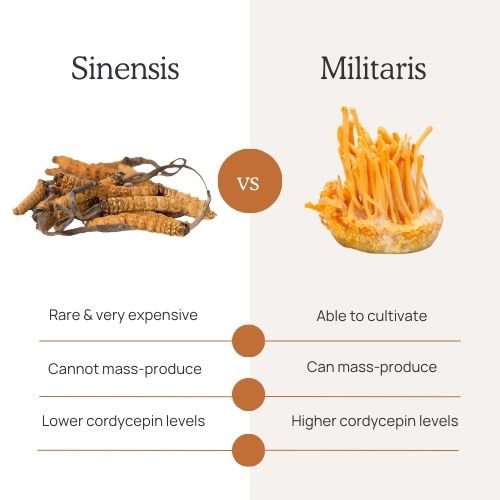
An Accessible Cordyceps:
While Cordyceps sinensis is prized for its rarity and potential health benefits, it is closely related to another species, Cordyceps militaris. This species offers many of the same health benefits but at a fraction of the cost, as it can be cultivated commercially.
Those seeking to incorporate the benefits of Cordyceps into their diet, extracts of Cordyceps militaris are a cost-effective and potent option.
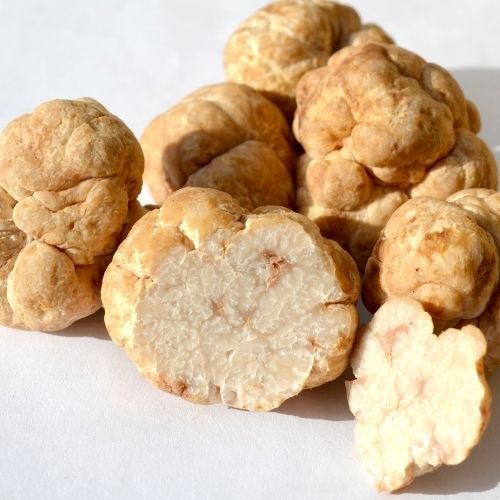
Known as the "diamond of the kitchen," white truffles are highly aromatic and have a pungent, earthy flavor that is unmatched by any other mushroom. The taste is often described as a combination of garlic, shallots, and a deep, musky aroma.
White truffles are expensive because they are rare and difficult to find. They are seasonal, hard to cultivate, and take many years to grow. Additionally, they have a short shelf life, which contributes to their high cost.
They are primarily found in the forests of Italy, particularly in the regions of Piedmont and Tuscany.
Harvesting is done using trained dogs or pigs that can sniff out the truffles buried underground. In gourmet cuisine, white truffles are often shaved raw over pasta, risotto, or eggs to enhance the dish with their intense aroma and flavor.

Matsutake mushrooms cost $1,000 to $2,000 per pound depending on the season and quality. However, in certain peak times or for particularly high-quality imports from Japan, prices can soar as high as $4,000 to $4,672 per pound.
Matsutake mushrooms are revered in Japan for their spicy, cinnamon-like aroma and firm texture. Matsutake mushrooms have a distinct, spicy flavor with a hint of pine and earthiness.
Matsutake mushrooms are expensive because they grow in rare conditions, specifically on the roots of red pine trees [2]. These forests have become increasingly scarce due to the invasion of a worm species, making a matsutake mushroom even more challenging to find.
They are found in Japan, Korea, China, and parts of North America, typically in pine forests. Matsutake mushrooms are wild-harvested, often in remote and difficult-to-access areas.
In gourmet cuisine, these expensive mushrooms are used in traditional Japanese dishes such as matsutake gohan (rice with matsutake) and in soups and stews to impart their unique flavor.
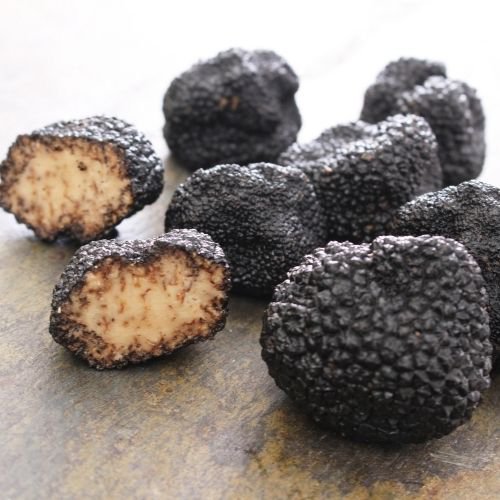
Known as the "black diamond," these truffles are prized for their robust, earthy aroma and complex flavor. They have a rich, nutty, and slightly sweet taste with a deep, earthy undertone.
They are wild mushrooms found in France, Spain, and Italy, particularly in the Périgord region of France.
Harvesting for these expensive mushrooms is done using trained dogs or pigs, similar to white truffles. In gourmet cuisine, European black truffles are often used in sauces, pâtés, and as a finishing touch on gourmet dishes to add depth and complexity.
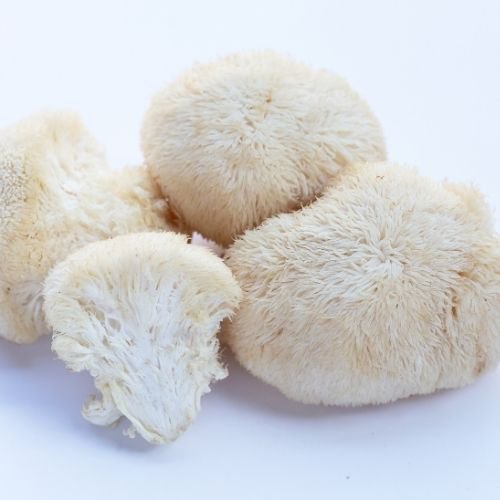
Recognizable by its cascading, icicle-like spines, Lion’s mane is known for its potential cognitive benefits and unique texture [3].
It has a seafood-like taste, often compared to crab or lobster. These premium, expensive mushrooms are found in North America, Europe, and Asia, typically growing on hardwood trees.
Lion’s mane mushrooms can be wild-harvested or cultivated, with wild specimens often considered superior. In gourmet cooking, they are used in vegetarian and vegan dishes as a meat substitute and are valued for their unique texture and flavor.
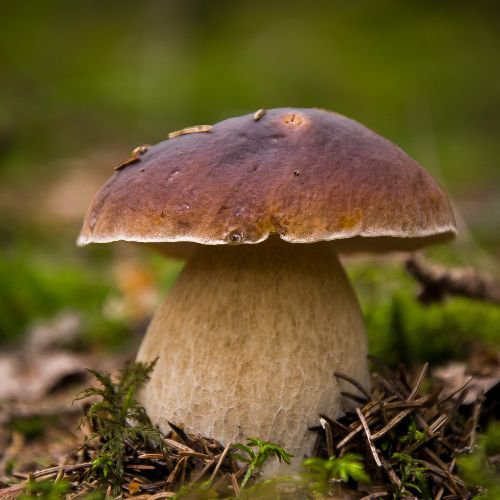
Widely found in Europe, particularly in Italy, France, and the Balkans, as well as North America, porcini mushrooms are renowned for their meaty texture and rich, nutty flavor. These expensive mushrooms have an earthy, slightly nutty taste with a firm, meaty texture.
Porcini mushrooms grow in the wild, often in coniferous and deciduous forests. They are harvested by hand, and foragers often keep their best spots a closely guarded secret.
In gourmet cooking, porcini mushrooms are versatile and complement meat dishes. They are used in risottos and soups.
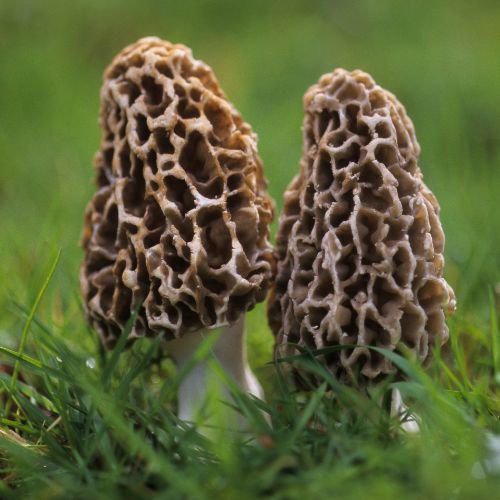
Morel mushrooms are highly prized and found across North America and Europe, particularly in wooded areas during the spring. Known for their distinctive honeycomb-like appearance, morel mushrooms offer a rich, earthy flavor with a meaty texture.
Morel mushrooms grow in the wild and are usually harvested by hand, with their locations often kept secret by seasoned foragers. In gourmet cooking, morels are celebrated for their versatility and are perfect for sautéing, frying, or adding to soups and stews.
Did You Know? Morels are called "true" morels to differentiate them from "false" morels. Although false morels don't look exactly like true morels, they can still mislead inexperienced foragers. It's important to note that false morels are toxic. One reliable way to tell them apart is that true morels are hollow inside, while false morels are not.
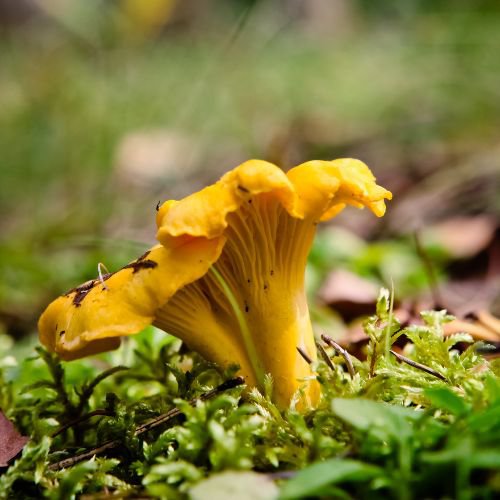
Chanterelle mushrooms, known for their bright yellow to orange color, are found in Europe, North America, and Asia, particularly in mossy forests during the summer and fall. They have a delicate, peppery flavor and a slightly chewy texture.
These expensive mushrooms grow in the wild and are harvested by hand, often found in clusters on the forest floor.
In gourmet cooking, chanterelles are celebrated for their versatility and are commonly sautéed with shallots and white wine, incorporated into egg dishes, and used in creamy soups and sauces.
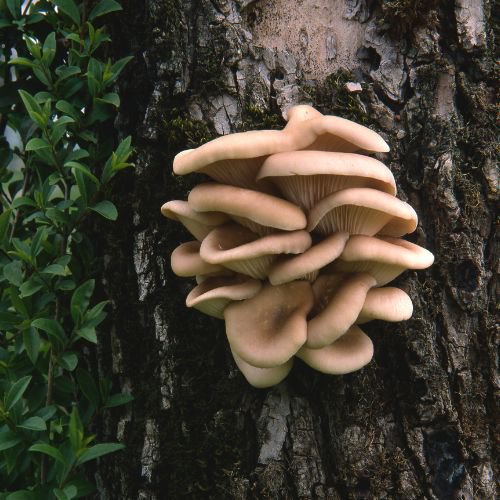
Oyster mushrooms are found globally, particularly in deciduous forests, growing on decaying wood. They come in various colors, including white, gray, and yellow, and have a mild, slightly sweet flavor with a tender texture.
These expensive mushrooms can be wild-harvested or cultivated, growing in layered clusters on logs and tree stumps. In gourmet cooking, oyster mushrooms are versatile and are often stir-fried with vegetables and soy sauce, used as a meat substitute in vegetarian dishes, and added to soups and broths for extra depth of flavor.
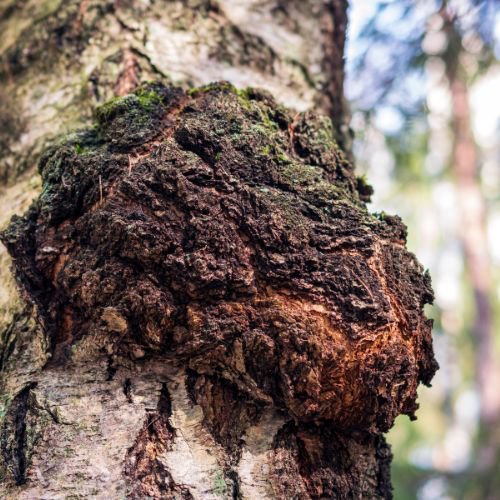
Chaga mushrooms are primarily found in the cold climates of Russia, Siberia, and parts of North America, growing on birch trees.
Known for their hard, black exterior and rich antioxidant content, chaga mushrooms are highly valued for their numerous health benefits [4].
These expensive mushrooms have a slightly bitter, earthy taste and are often used in teas and tinctures. These mushrooms are wild-harvested by carefully removing them from birch trees.
In gourmet uses, chaga is primarily utilized for its potential health benefits rather than its flavor. It is often incorporated into health drinks and supplements. Chaga contains antioxidants and betulin acid, which can help in various medical conditions, like managing blood sugar levels [5].
Chaga-Infused Drinks: One of the best ways to enjoy the benefits of chaga mushrooms is by drinking them in tea or coffee.
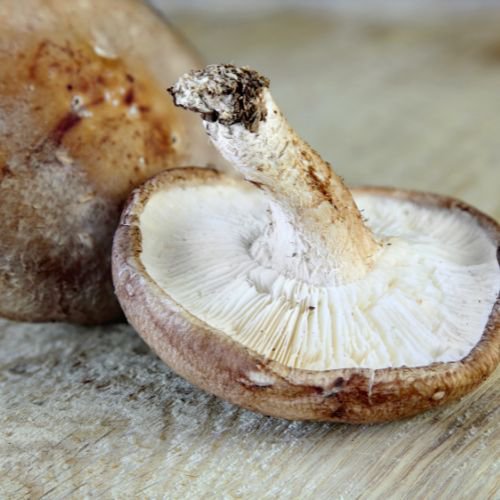
Shiitake mushrooms are found in East Asia, particularly Japan, China, and Korea, and are now widely cultivated worldwide. They are prized for their rich, savory flavor and meaty texture.
They grow on decaying hardwood logs or sawdust blocks and are easily identifiable by their dark brown to black caps.
In gourmet cooking, shiitake mushrooms are versatile and commonly used in stir-fries, soups, and broths, adding a depth of flavor to various dishes.
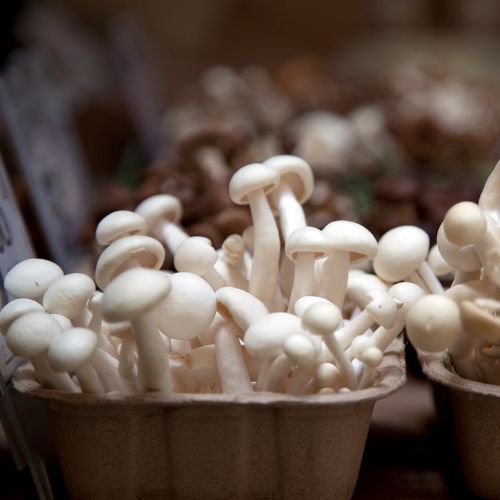
Enoki mushrooms are native to East Asia and are commonly cultivated in Japan, China, and Korea. They are known for their long, thin stems and small white caps, with a mild, slightly fruity flavor and crunchy texture.
These expensive mushrooms grow in clusters on tree trunks and are usually cultivated in controlled environments.
Enoki mushrooms are often used in soups, hot pots, and salads, as well as as a garnish for various dishes, adding both texture and visual appeal.
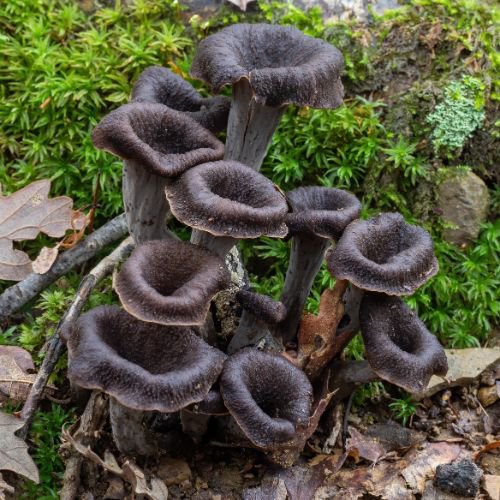
Black trumpet mushrooms, also known as the horn of plenty, are found in Europe and North America, particularly in deciduous forests during the summer and fall. They are prized for their rich, smoky flavor and delicate texture.
These mushrooms grow in the wild and are harvested by hand, often hidden among leaf litter. In gourmet cooking, black trumpets are used to enhance the flavor of sauces, soups, and risottos, offering a unique depth of flavor to dishes.
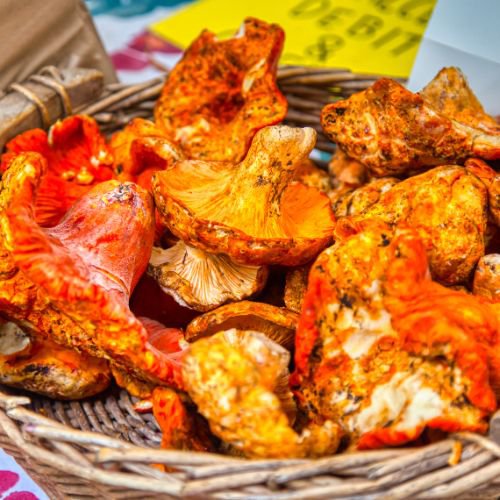
Lobster mushrooms are found in North America, particularly in the Pacific Northwest and Eastern United States. They are unique fungi created when the parasitic fungus Hypomyces lactifluorum infects certain species of mushrooms, transforming them into bright orange-red, seafood-flavored delicacies.
Lobster mushrooms grow in the wild and are harvested by hand, often found in forested areas. In gourmet cooking, lobster mushroom dishes often make use of their unique, seafood-like flavor and texture. They are sautéed with butter and garlic, or added to chowders and bisques.
Now that you've explored the extraordinary world of the most expensive mushroom varieties, it's time to experience them yourself. Seek out these luxurious fungi at specialty markets, grocery stores, or high-end restaurants to savor the unique flavors that make them so coveted.
The high cost of these expensive mushrooms shouldn’t deter you from experiencing their rich flavor and potential health benefits. In fact, you can enjoy the richness and depth they bring to your culinary creations using Real Mushrooms Organic Extract Supplements.
Choose from a wide selection of edible mushroom varieties, such as lion’s mane, chaga, reishi, and more. Our products come in capsule and powder form, allowing you to add them to your recipes and diet regimen easily.

 .
.Disclaimer: The information or products mentioned in this article are provided as information resources only, and are not to be used or relied on to diagnose, treat, cure, or prevent any disease. This information does not create any patient-doctor relationship, and should not be used as a substitute for professional diagnosis and treatment. The information is intended for health care professionals only. The statements made in this article have not been evaluated by the Food and Drug Administration. Any products mentioned are not intended to diagnose, treat, cure, or prevent any disease. The information in this article is intended for educational purposes. The information is not intended to replace medical advice offered by licensed medical physicians. Please consult your doctor or health practitioner for any medical advice.